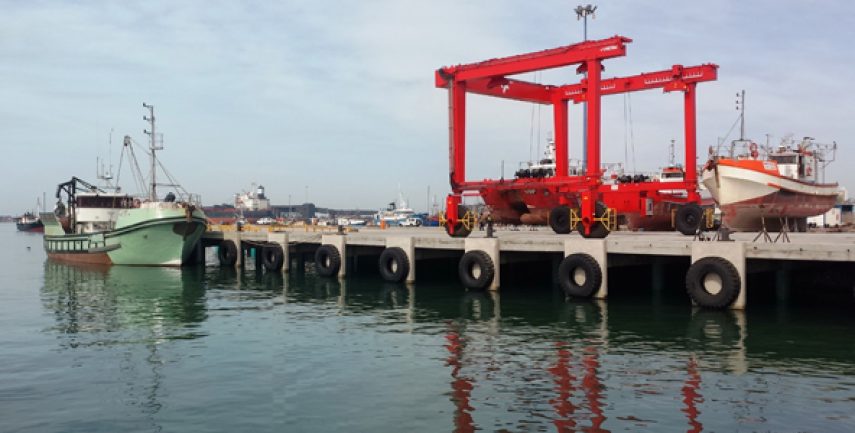THE new vessel repair facilities in the Port of PE were not only developed as a positive step towards a thriving vessel maintenance and marine engineering hub, but also to boost the local economy in the long term.
That’s according to Project Manager Pieter-Ben van Rhijn, who said that with the final part of this R200-million project completed about a year ago, it was now showing a return on investment.
“We have serviced more than 140 local and foreign fishing vessels since the completion of the facilities. This is in line with our expectations of the growing need among the fishing fraternity. The boat hoist is capable of lifting vessels of up to 90 tons from the docking bay,” Van Rhijn said.
Located in the precinct envisioned to form part of the waterfront development, it is hoped that this buzz of activity will create the ideal attraction in a waterfront marina. It is in line with Transnet’s Smart People’s Port concept of integrating port operations and leisure and recreation.
The replacement of the 130-year-old, 1 200-ton lead-in jetties and the upgrade of the 40-ton slipway started in November 2014 as part of Operations Phakisa. This initiative focuses on unlocking the economic potential of SA’s oceans by stimulating economic growth and creating jobs.
Altogether 82 direct job opportunities were created as a result of the project and indirect job opportunities to the equivalent of 19 183 man days.
The upgrade of the boat docking bay from where the boat hoist lifts vessels out of the water and position them on a dry platform for maintenance work required the installation of new piles to support the platform deck and docking bay as well as construction of a new retaining wall and backfilling behind the retaining wall to reclaim the old 40 ton slipway.
Additionally a new concrete slab where vessels are placed for repair was built and bollards and fenders on the mooring side of the slipway were installed.
Other work included installation of high mast lights and electrical reticulation, new fire water piping and procurement of Transnet’s first of its kind 90-ton boat hoist.
Lead-in jetties were demolished and rebuilt as the existing structure has been condemned due to excessive corrosion. To construct the new jetties entailed demolishing of the pre-existing South and North lead-in jetty structures, installation of new piles, and a concrete deck and a down haul winch house.
As with the boat docking bay, the new jetties required bollards and fenders on the mooring side of the slipway, high mast lights and electrical reticulation and new fire water piping.
The project to bring the slipway cradle back to 1 200 tons is currently underway.
The jetties, which extend the life of the slipway, were constructed at a lower level to create much needed additional berthing space and at the same time provide opportunities to perform wet repairs.
The boat maintenance slab was increased in size and can now accommodate a minimum of ten vessels at a time (depending on size), as opposed to two vessels currently accommodated on slipway. According to Van Rhijn, efficiency and productivity has also improved drastically with less risk of damage.

